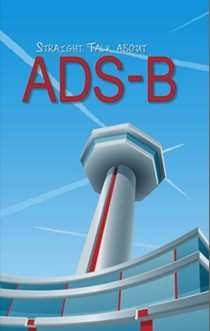Wed, Feb 25, 2015
EAA Received Assurances At ‘Equip 2020’ Meeting In D.C. That Experimental Aircraft Are Not Required To Install TSO ADS-B Equipment
Last week ANN reported that rule clarifications requiring ADS-B to be installed by the year 2020 could result in non-TSO ADS-B equipment being okay for experimental airplanes. EAA has just released an announcement that says they have now confirmed this is the case.

At an “Equip 2020” meeting involving the FAA, aviation groups, and industry officials this week in Washington, D.C., the agency restated their intent to ensure that the year 2020 mandate for ADS-B “out” installation would allow experimental category aircraft to install non-TSO equipment that meets TSO performance specifications. Such an allowance would support greater compliance with the mandate by reducing costs for such equipment and maintaining the freedom traditionally found within the experimental category.
“The FAA maintained the same position as during the EAA/FAA winter summit earlier this month: It wants to keep the pathway to compliance as simple as possible,” said Sean Elliott, EAA’s vice president of advocacy and safety, who attended the meeting along with Doug Macnair, EAA’s vice president of government relations. “It’s important that the innovation and flexibility available through the experimental category, which often leads to improvements for the entire GA fleet, is not hindered by a specific mandate such as an ADS-B TSO requirement.”
EAA has committed to helping the FAA with language that would help clarify and provide guidance for experimental category aircraft owners and builders for ADS-B equipment and installation. Historically, builders and owners of experimental aircraft have been able to install avionics that meet the performance standards of certified equipment but are not specifically approved by the FAA. Even in IFR-equipped aircraft, avionics do not have to be approved devices and can be installed by the aircraft builder or by an A&P mechanic.
While the 2020 ADS-B mandate applies to all aircraft that will operate within airspace that requires an altitude encoding transponder, there are unique provisions and opportunities within the amateur-built regulations that may allow owners of experimental aircraft to meet the requirements with greater flexibility and potentially lower cost. That could specifically mean, for instance, the ability for a builder to individually install certified ADS-B systems, or seek out non-certified ADS-B systems that meet the mandate’s performance standards.
(Image from file)
More News
Aero Linx: Model Aeronautical Association of Australia MAAA clubs are about fun flying, camaraderie and community. For over 75 years, the MAAA has been Australia’s largest fl>[...]
Touchdown Zone Lighting Two rows of transverse light bars located symmetrically about the runway centerline normally at 100 foot intervals. The basic system extends 3,000 feet alon>[...]
“Discovery and innovation are central to our mission at Virgin Galactic. We’re excited to build on our successful record of facilitating scientific experiments in subor>[...]
How To Get A Story On Aero-TV News/Feature Programming How do I submit a story idea or lead to Aero-TV? If you would like to submit a story idea or lead, please contact Jim Campbel>[...]
Student Pilot Reported That During Rotation, “All Of A Sudden The Back Of The Plane Kicked To The Right..." Analysis: The student pilot reported that during rotation, “>[...]
 ANN's Daily Aero-Linx (05.02.24)
ANN's Daily Aero-Linx (05.02.24) ANN's Daily Aero-Term (05.02.24): Touchdown Zone Lighting
ANN's Daily Aero-Term (05.02.24): Touchdown Zone Lighting Aero-News: Quote of the Day (05.02.24)
Aero-News: Quote of the Day (05.02.24) ANN FAQ: Contributing To Aero-TV
ANN FAQ: Contributing To Aero-TV NTSB Final Report: Cirrus Design Corp SR20
NTSB Final Report: Cirrus Design Corp SR20



